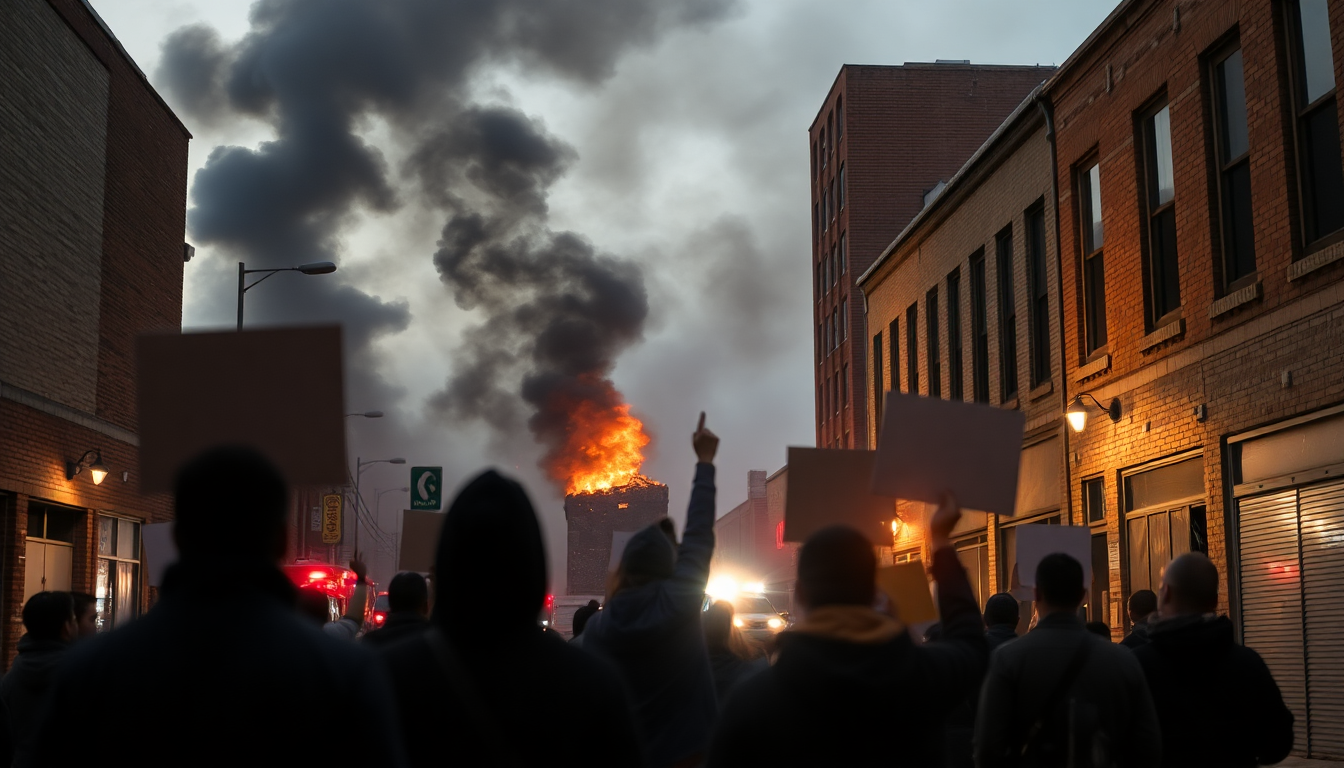Table of Contents
In the midst of chaos and flames, a once-peaceful city has transformed into a battleground of incompetence and negligence. The recent protests in Los Angeles have not only left businesses in ruins but have also exposed the glaring inadequacies of state and local leadership. Patrick Gipson, the L.A. County GOP Vice Chair and former sheriff’s deputy, has had enough. His scathing critique of politicians, especially Governor Gavin Newsom, shines a harsh light on a system that seems to thrive on chaos rather than order.
Protests and political opportunism
As the city erupted into violence, Gipson didn’t hold back. He openly accused state officials of playing politics while the city burned. “These riots are completely unnecessary,” he declared, pointing a finger at Newsom for failing to act decisively. Instead of stepping up, Newsom has been criticized for his reactionary approach, leading to a situation where businesses are looted and livelihoods destroyed. It’s almost as if the governor is waiting for the disaster rather than preventing it. What does that say about his leadership? Are we really expected to believe that this is the best he can do?
Where’s the National Guard?
Gipson’s frustration is palpable when he discusses the delayed deployment of the National Guard. He argued that an earlier response could have saved California billions in damages. Instead, here we are, watching our cities unravel while politicians squabble and place blame. Newsom’s inability to make a timely decision has left a vacuum of authority that only invites chaos. And let’s be real—if the governor can’t manage a protest, what hope do we have for the future of public safety?
Local leadership under fire
Then there’s Los Angeles Mayor Karen Bass, who Gipson claims is merely a puppet, taking orders from Newsom rather than leading her city. Her attempts to call for peaceful protests ring hollow when the reality is so starkly different. “This is not the way to protest,” she said, but who’s listening when the streets are filled with violence? It’s a sad state of affairs when the leadership struggles to assert itself amidst the chaos. You’ve got to wonder—are they even equipped to handle the situation?
Blame game and shifting responsibility
Newsom, in a desperate attempt to deflect blame, pointed fingers at former President Trump, claiming his rhetoric escalated tensions. But let’s get real; every leader is responsible for their turf. If Newsom had taken the initiative instead of playing the blame game, maybe we wouldn’t be witnessing this debacle. It’s as if he’s preparing for 2028 while the present is burning down around him. Talk about misplaced priorities!
The consequences of soft policies
Gipson highlights a pressing issue: the consequences of so-called “soft-on-crime” policies. He argues that the state’s reluctance to fund effective crime control measures has left communities vulnerable. Proposition 36, which aimed to rein in some of the radical policies of Proposition 47, is allegedly underfunded and ignored. The result? Citizens are scared to shop, fearing violence at every corner. “People won’t even get on the freeway toward LA now,” Gipson lamented. What does that say about our society when fear dictates our daily lives?
Law enforcement in crisis
The morale among law enforcement officers is at an all-time low, according to Gipson. Officers feel handcuffed—literally and figuratively—by a leadership that has failed to support them. “They’re afraid to do their jobs because they don’t want to go to jail for following their training,” he explained. When officers hesitate, as Gipson rightly points out, it’s the public who pays the price. The irony is palpable; we need law enforcement to maintain order, yet they’re being undermined at every turn.
Systemic failures and a call for action
Gipson’s critique doesn’t stop at individual leaders; he points to systemic issues that paralyze law enforcement. The bureaucratic chain of command creates delays that can be deadly during critical moments. “When they can’t arrest people right away, the violence just keeps going,” he said, highlighting a fundamental flaw in how we handle public safety. The solution, he argues, is simple: there must be consequences for actions, both for criminals and for leaders who fail to act.
What’s next for California?
As the dust settles from the protests, one thing is clear: California is at a crossroads. The leadership must step up, or the chaos will only continue. The people deserve better than this farcical display of governance. Will they rise to the occasion and restore order, or will they keep playing the blame game while the state burns? Only time will tell, but one thing is certain—the citizens are fed up, and they’re starting to demand answers. What will it take for them to finally get the leadership they deserve?


